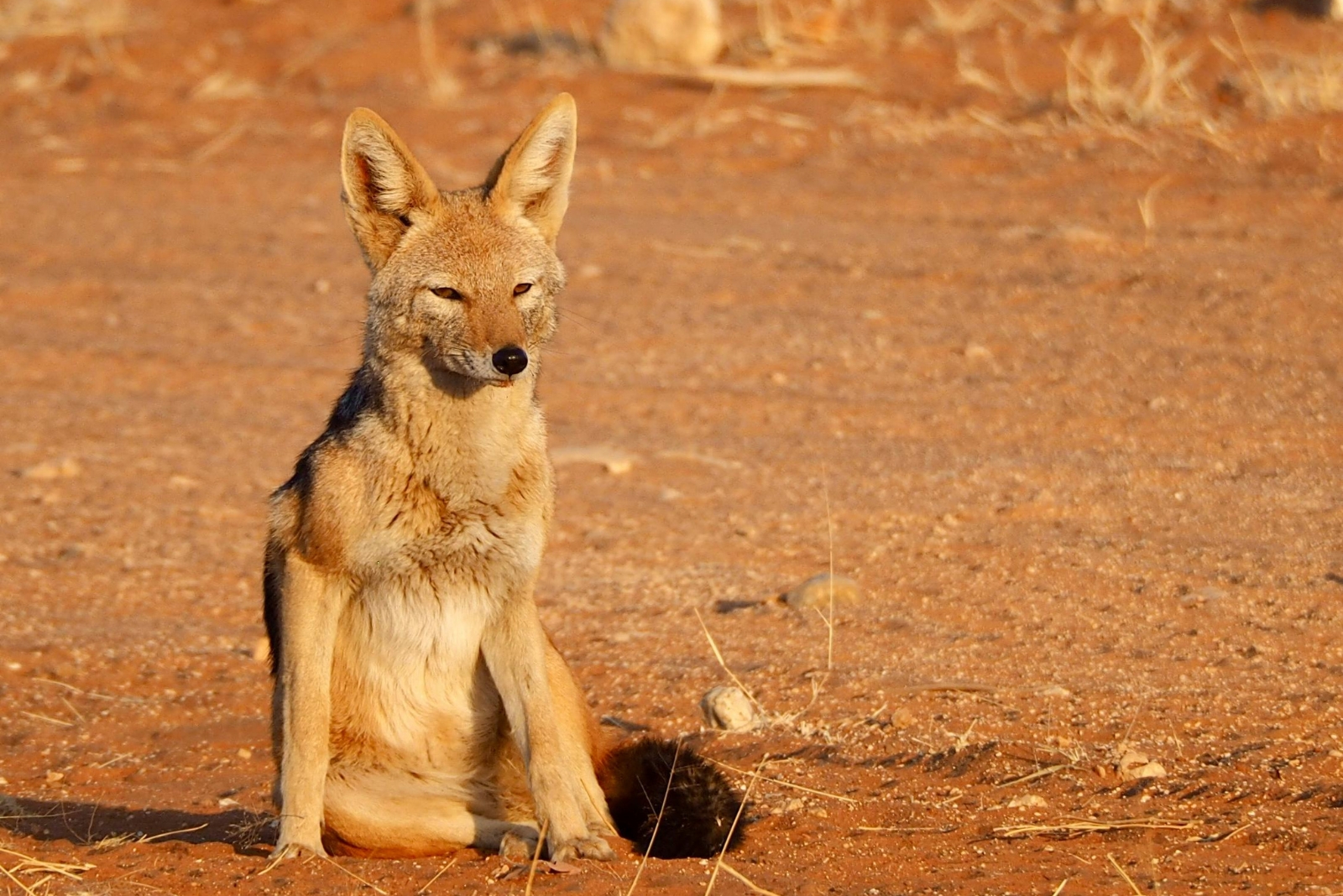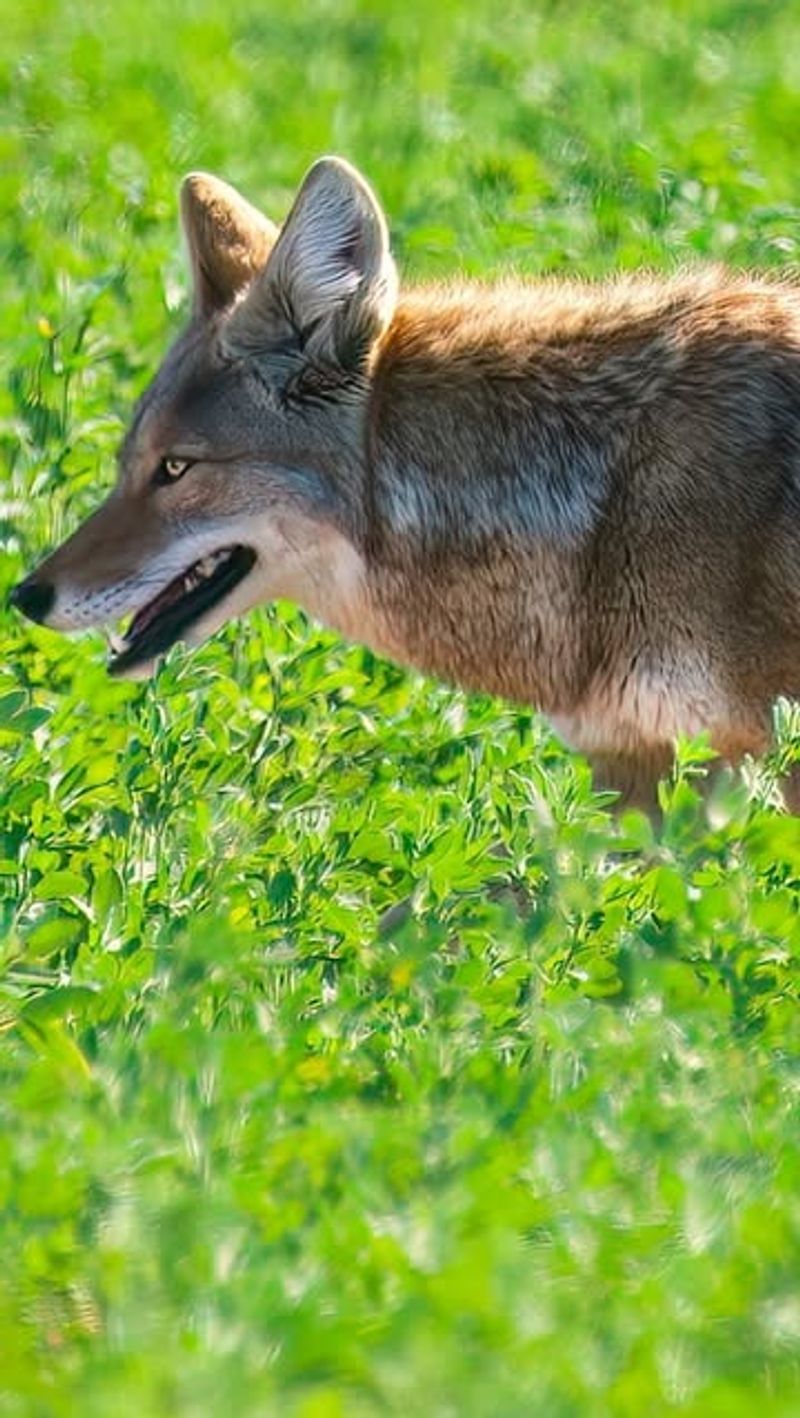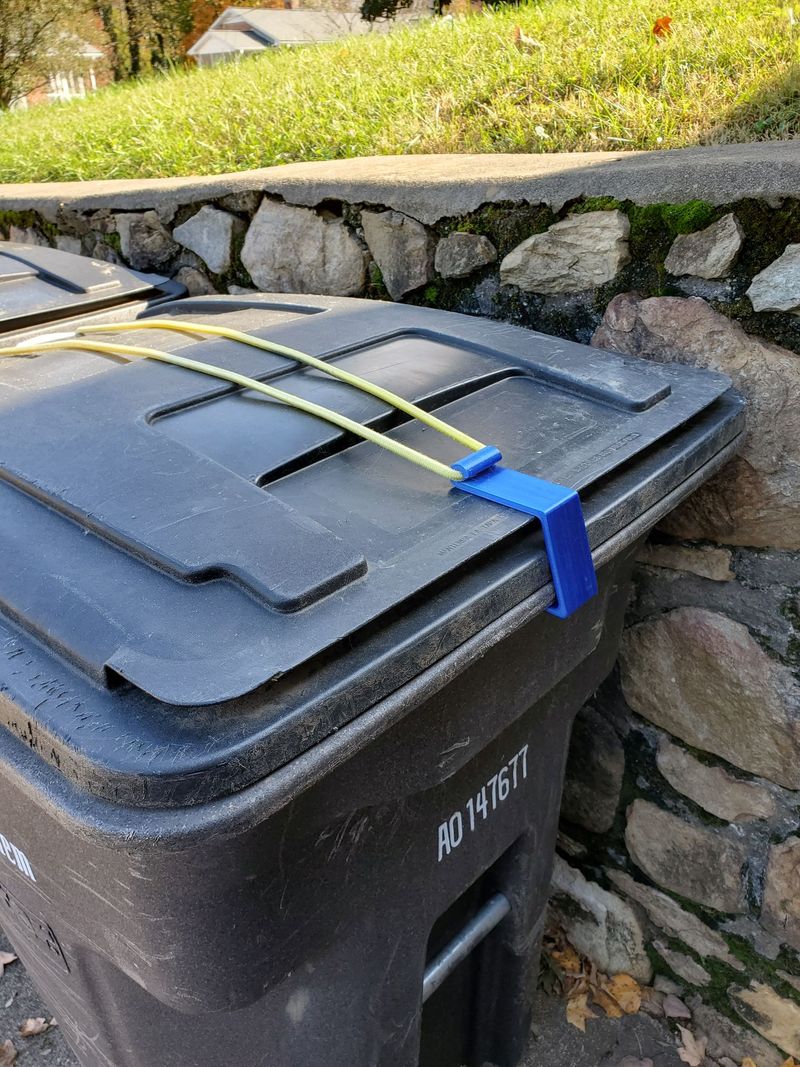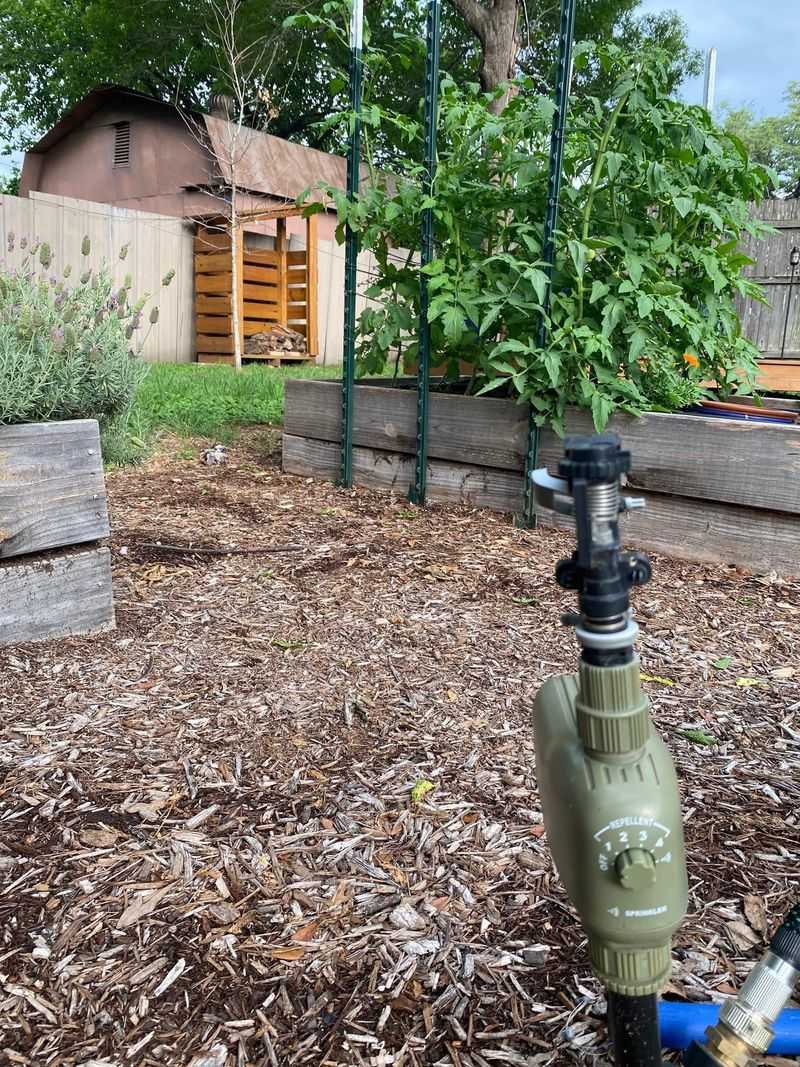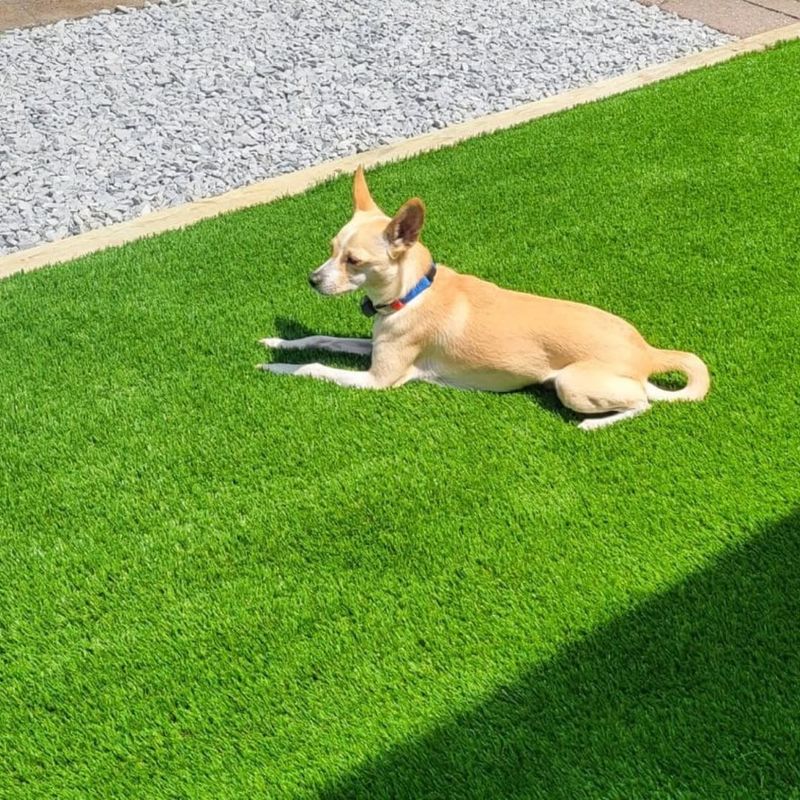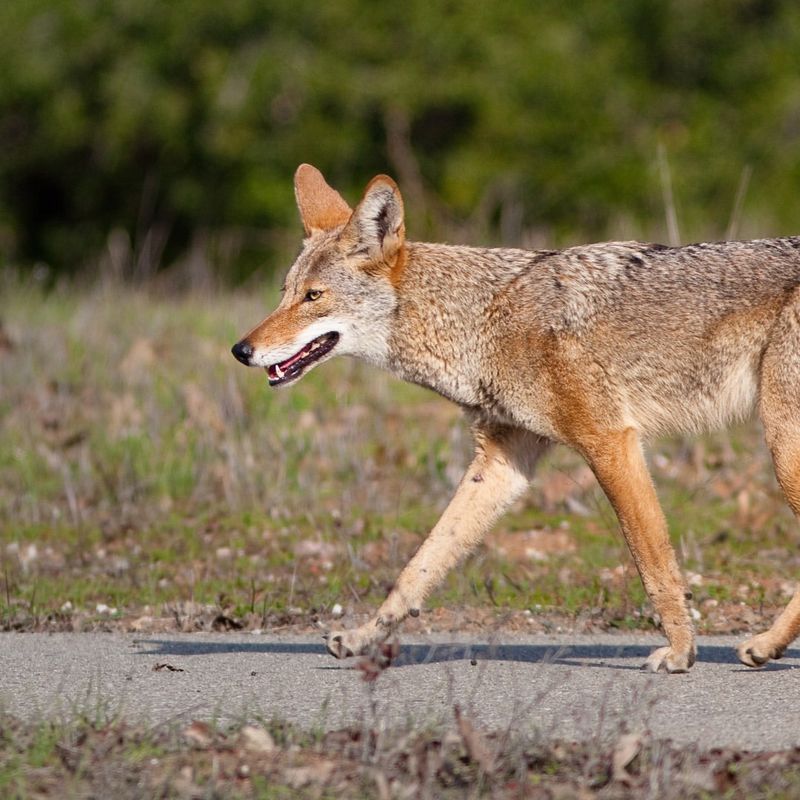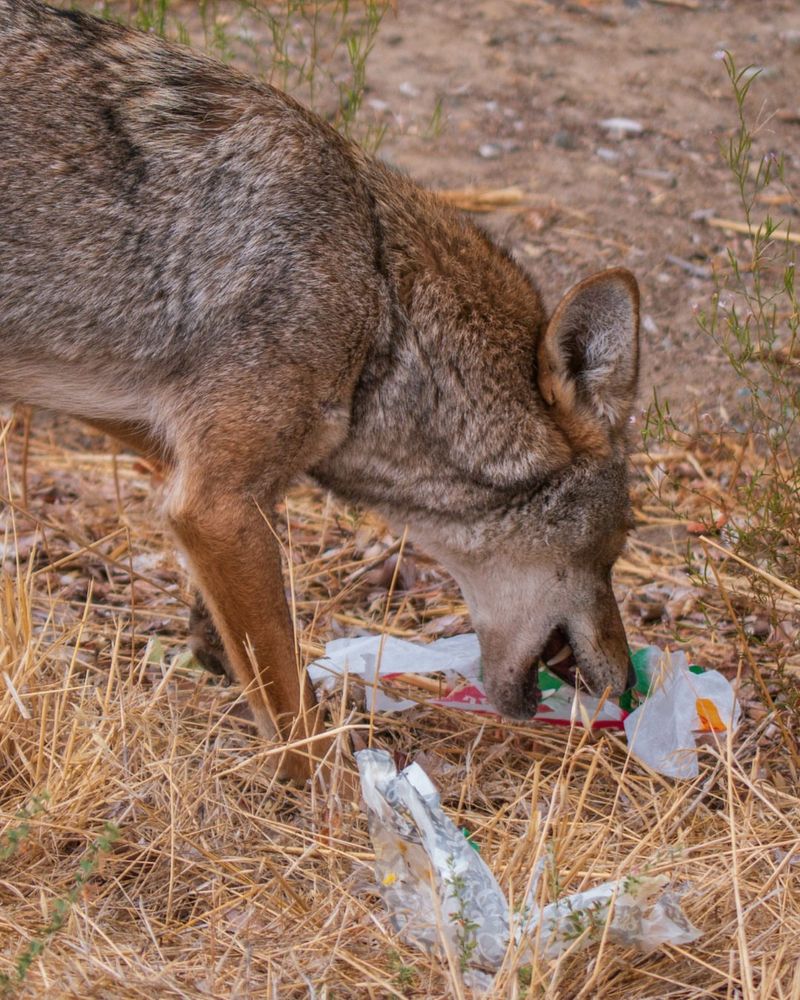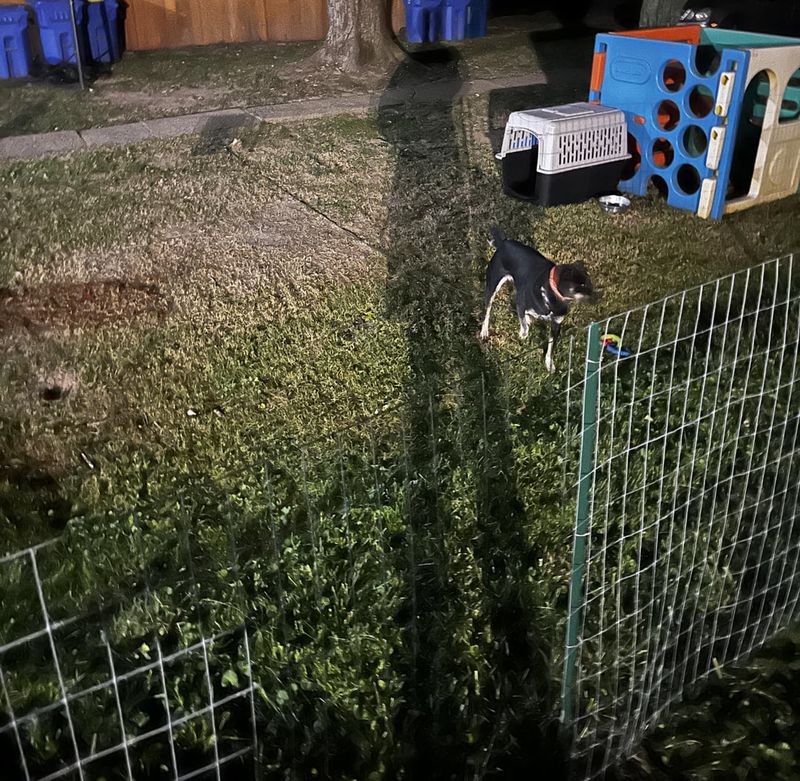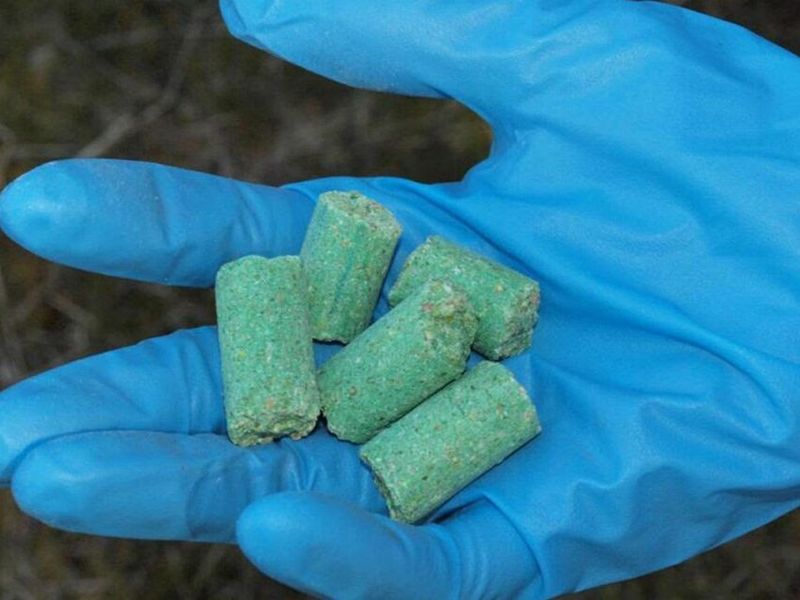Coyotes are showing up more often in Nevada neighborhoods, and knowing how to respond can keep you, your family, and your pets safe. While these wild animals usually avoid people, they sometimes wander into yards looking for food or water.
Learning the right steps to take—and the mistakes to avoid—makes all the difference when a coyote appears near your home.
1. Make Yourself Look Bigger And Louder
Standing tall and raising your arms transforms you into something intimidating rather than prey. Coyotes rely on body language to decide whether to approach or retreat, so appearing larger disrupts their confidence.
Yelling, clapping, or banging pots together adds sound to your visual presence. Most coyotes will turn and leave when faced with this combination of noise and size.
Keep moving toward the animal slowly while maintaining this aggressive stance until it leaves your Nevada property completely.
2. Remove All Food Sources From Your Property
Hungry coyotes remember where they find meals, so eliminating attractants keeps them from returning. Pet food left outside acts like a dinner invitation, drawing wildlife straight to your door.
Fallen fruit from trees, unsecured garbage, and compost piles also tempt coyotes to explore your Nevada yard. Bird feeders attract rodents, which in turn attract predators looking for an easy catch.
Clean up thoroughly after outdoor meals and store trash in containers with tight-fitting lids.
3. Install Motion-Activated Lights And Sprinklers
Automatic lighting startles coyotes when they enter your yard, making them feel exposed and vulnerable. Animals that hunt at dawn and dusk prefer shadows and cover, not sudden brightness that reveals their location.
Sprinklers that trigger with movement add an unexpected water blast that sends coyotes running. The combination creates an environment where these animals feel unwelcome without any effort from you.
Position sensors near common entry points like fence gaps or Nevada property edges for maximum effectiveness.
4. Keep Pets Supervised And Leashed Outdoors
Cats and small dogs look like prey to coyotes, especially during early morning or evening hours when these predators hunt most actively. Leaving pets outside alone puts them at serious risk, even in fenced yards.
Leashes give you control to pull your pet away quickly if a coyote appears nearby. Staying outside with your animals provides protection through your presence alone.
Consider scheduling bathroom breaks during daylight hours when coyote activity decreases significantly across Nevada neighborhoods.
5. Build Or Repair Fencing To Block Entry
Solid barriers at least six feet tall prevent most coyotes from jumping into your Nevada yard. Gaps under fences or broken sections create easy access points that animals will remember and use repeatedly.
Extending wire mesh underground by about twelve inches stops coyotes from digging underneath. Check your fence line regularly for new holes or weak spots that need immediate repair.
Chain-link works well, but adding privacy slats makes your yard less visible and therefore less interesting to passing wildlife.
6. Use Hazing Techniques Consistently
Hazing teaches coyotes to fear humans through repeated negative encounters that don’t harm them physically. Shaking a can filled with coins, using air horns, or throwing tennis balls near the animal reinforces boundaries without injury.
Consistency matters because coyotes learn patterns quickly and will test areas where people don’t respond. Everyone in your Nevada neighborhood should haze coyotes every single time they appear to create lasting behavioral change.
Never haze during pupping season if babies are present, as parents become more defensive then.
7. Report Aggressive Coyote Behavior To Wildlife Officials
Wildlife managers track coyote behavior patterns across communities to identify animals that pose genuine threats. When a coyote approaches people directly, shows no fear, or stalks pets aggressively, authorities need to know immediately.
Your report helps officials decide whether relocation or other interventions are necessary for public safety. Detailed information about time, location, and behavior gives experts data to make informed decisions.
Contact your local Nevada Department of Wildlife office or animal control with specific observations rather than vague concerns.
8. Educate Your Neighbors About Coyote Safety
Nevada community-wide efforts work better than individual actions because coyotes roam across multiple properties. When one household feeds wildlife or leaves attractants out, it affects everyone nearby by encouraging animals to stay in the area.
Sharing information about proper deterrents and hazing creates consistent messages that coyotes can’t ignore. Organize a neighborhood meeting or distribute flyers with safety tips to get everyone on the same page.
Collective awareness reduces conflicts and keeps both people and wildlife safer throughout your entire subdivision.
9. Feeding Coyotes Directly Or Indirectly
Offering food seems kind but actually trains coyotes to associate humans with meals, erasing their natural wariness. Once animals lose their fear, they approach homes boldly and may become aggressive when food expectations aren’t met.
Indirect feeding through unsecured trash or pet bowls creates the same problem. Laws in many Nevada areas prohibit wildlife feeding specifically because it endangers both people and animals.
Fed coyotes often must be removed or euthanized when they become too comfortable around humans and pose safety risks.
10. Approaching Or Cornering A Coyote
Getting too close eliminates escape routes and triggers defensive behavior in any wild animal. Cornered coyotes may bite or attack when they feel trapped, even if they normally avoid confrontation.
Children especially need to understand that coyotes aren’t dogs and should never be approached for any reason. Maintaining at least 50 feet of distance gives animals space to retreat without feeling threatened.
Back away slowly while facing the coyote rather than turning your back or running, which can trigger chase instincts.
11. Leaving Small Pets Outside Unattended At Night
Nighttime brings peak hunting hours for coyotes across Nevada, making unsupervised pets extremely vulnerable. Animals under 25 pounds face the highest risk, but even larger dogs have been injured during territorial disputes.
Doggy doors that allow free access create dangerous situations because pets can wander out during high-risk hours. Invisible fences provide no physical barrier, so coyotes simply walk through them to reach your animals.
Always accompany pets outside after dark and bring them in immediately after they finish their business.
12. Using Poison Or Traps Without Professional Guidance
Unauthorized trapping or poisoning violates Nevada wildlife laws and creates serious hazards for children, pets, and non-target animals. Poisons spread through the food chain, killing owls, hawks, and other beneficial predators that eat affected coyotes or rodents.
Traps cause extreme suffering and often catch unintended victims like neighborhood cats or dogs. Only licensed professionals have the training and legal authority to use these methods safely and humanely.
Focus on prevention and deterrence instead, which solve problems without legal consequences or ethical concerns.

